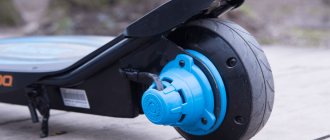In the mechanisms that people use in everyday life, you can often find such a part as a bearing. They are found in systems of both household and industrial appliances. The bearing housing is part of the workpiece assembly. It comes in different shapes, varieties and sizes. To better understand its structure, it is necessary to study the bearing housing. Self-repair of many types of equipment will become clearer and more effective. If desired, you can create bearing housings yourself.
general characteristics
The bearing housing is a special part. It is usually made of cast iron or other alloys. A bearing housing is used to seat the main shaft on the main platform. It secures the part tightly.
The housing and the bearing itself - rolling, sliding and other varieties - together create a unit. It is easy to find in the equipment and technology of enterprises in all industrial sectors.
Since quite a few types of the presented parts have been developed, there are even more cases for them. Moreover, manufacturers are ready to produce both standard configuration products and housings for specially shaped bearings. In the latter case, an individual drawing is created, on the basis of which the master produces the required part. This makes it possible to ensure that the unit complies with existing production conditions.
Modern bearing housings
Today, the manufacturing process allows the mechanism to be manufactured with some additional part or as a separate product. The housings differ in the bearing mounting system inside the housing; for example, it can be mounted on legs. It depends on the type of part.
Housings for rolling, sliding and other types of bearings are made from high-quality materials. It can be cast iron, pressed or stamped steel, synthetic rubber.
In the modern market of bearing units, imported mechanism elements predominate. Their popularity is explained by the increasing number of different foreign equipment. During operation, it requires bearing units of a certain type, which our production does not produce.
Design features and characteristics of the bearing assembly
The bearing unit housing itself is a steel or cast iron case where the rolling or sliding bearings are located. Holes with or without threads are provided for fastening the product.
Design features of products
Housing bearings are designed so that the outer part does not move, but the inner ring rotates along the axis of the shaft. You can order a housing bearing, where the housing and ring are a single unit, and bearing unit covers are also provided. For protection, a reliable seal of the bearing units is provided, which is important when operating in conditions of high humidity and large amounts of dust.
Ball or roller, housing flange bearings are made of chrome-plated steel or stainless steel, high-strength alloys, and polymers.
Note! Parts of impressive sizes are manufactured to order, for example, a double-bearing bearing unit with a shaft for tanker propellers. Also, when ordering, the characteristics of the bearing assembly preferred by the customer are indicated.
Case types
There is a certain classification of bearing housings. Each type differs in its purpose, mounting method, configuration and size. The following varieties are standard today:
- stationary solid;
- stationary detachable;
- flanged.
The one-piece stationary type of case is made of pure nickel, which makes it more rigid and simpler. The axial fit of bearings in the housing has a complex axial type of installation. Therefore, this variety is used in low-speed mechanisms that have a small shaft diameter.
The detachable stationary housing is made of gray cast iron. It consists of a lid and a base. These body elements are connected with bolts. This design makes it easy to change the bearing when it wears out, make a secondary bore of the liner, and also adjust the gap. This is a common type of housing in mechanical engineering.
The flanged body is similar to the previous type. It consists of a base and a cover connected by bolts. It is used for very demanding parts. It serves as a support for both the end and through shafts.
Housing bearings
LLC Trading House “Rospodshipnik” sells a wide range of housing bearings, both assembled with housings of all types, and separately, produced by Craft bearings, NSK, SKF, NTN-SNR and other foreign and Russian manufacturers.
Briefly about self-aligning bearings:
Design of body units (see).
Why were housing bearings developed:
- optimization of the metal consumption of the structure (reducing the weight of previously used solutions in the form of stationary units);
- facilitating installation and dismantling of bearings.
The main difference from standard and previously used solutions:
- the ability to compensate for misalignment in the range from 2 to 5 degrees (average initial misalignment);
- housing units perceive radial and axial loads and can fix the shaft in the axial direction.
The main advantages of using enclosures:
- high operating speeds of rotation of self-aligning bearings;
- ability to work in the presence of vibrations;
- standardization of products, simplifying the work of designers;
- products are available for shafts with metric or inch dimensions;
- maximum simplicity and efficiency in replacement (repair of application units);
- The closed-monolithic design of the housing bearing makes it possible to work in dusty conditions.
Main disadvantages:
- housing bearing units do not compensate for axial displacement.
Main Application:
- agricultural engineering;
- conveyor equipment (roller tables);
- food and chemical industry;
- specialized equipment.
In general, housing bearings are widely used in all industries.
The most widespread in Russia are:
- stationary enclosures type P, PA (UCP, UCPA);
- flanged housings type F, FC, FL (UCF, UCFL, UCFC).
Latest know-how in the insert bearing industry:
- use of PTFE-seal type seals;
- production of the body from glass-filled polyamide.
Development of the housing bearing industry in the near future The main direction in which high-tech manufacturers (premium segment of housing bearings) will move is the design of more modern, lightweight and ultra-strong housing materials, as well as the development of new types and forms of seals.
Housing bearings were first manufactured in Japan approximately 50 years ago; later their production was mastered by American and European bearing manufacturers.
This industry has a huge impact on all areas of industry, allowing for improved designs of bearing applications.
The production of housing bearings has long become a separate branch of industry, developing alongside the production of ordinary bearings.
Due to the great popularity and distribution of housing bearing units, the number of manufacturers with their own offers has increased, striving to take their position in a certain price segment.
However, the consumer must understand that visually similar products may differ qualitatively. The strength of gray cast iron, its compliance with standards, the processing and shape of the casting, the stiffeners, the reinforced base, good lubrication and reliable seals have a certain value. Therefore, the determining factor for choosing a housing bearing is not only its cost, but an understanding of the responsibility, purpose of the unit and its ability to operate to failure.
Contact the specialists of TD Rospodshipnik right now for consultations related to the selection, operation, and purchase of housing bearings.
Features of operation
The bearing housing must provide the entire assembly with the required operating parameters. It operates under heavy loads and should not create an increased noise level. Extreme operating conditions of the unit should not reduce the durability of the housing and the entire mechanism.
Depending on the purpose, there are a large number of types of structures. Each manufacturer labels them differently. You can highlight the most popular manufacturing companies.
The housing has a spherical shape for installing the bearing itself. This allows the elements of the mechanism to be installed independently. Oil-repellent ring-shaped rubber seals are installed between the bearing and the housing.
Thrust ball bearings
Fig 4.3
Thrust ball bearings are available in single row and double row ball designs. They are detachable and thus easy to install. Thrust ball bearings can only support axial loads. They are suitable for high speed use. These types of bearings do not allow any misalignment, however, to overcome this problem, the design contains holes for spherical washers and seat rings. To ensure optimal performance, thrust ball bearings require a certain minimum load.
Single row thrust ball bearings consist of a blunt ring with a smaller diameter and a loose ring with a larger diameter, each with a raceway. These rings are separated from each other by a cage with rolling elements.
This design will only accept axial loads in one direction.
Double row thrust ball bearings are suitable for accommodating axial forces in both directions. They consist of two rings and a ring located in the middle part of the structure, separated by two cages with rolling elements. These bearings do not allow any misalignment
Thrust roller bearings have a very simple design consisting of a ring and a cage with rollers. Thrust roller bearings are able to support higher loads than thrust ball bearings, so they are suitable for applications where very high axial loads are required. These types of bearings are insensitive to shock loads, are not suitable for radial loads and do not allow any misalignment.
Double row cylindrical roller thrust bearings can be composed of single thrust roller bearings together with ZS type intermediate washers. These intermediate washers are part of the additional NKE range.
Fig 4.4
Features of fastening to the body
There are several types of bearing fitment on the shaft in the unit housing. The most common of them today are the technologies described below.
One of the most common is a bearing in a housing on legs. It has the ability to lubricate and is involved in the creation of high-speed mechanisms. These could be fans, emergency energy saving systems, flywheels. Their distinctive feature is the ability to work at elevated temperatures.
The inner ring can also be secured to the shaft using set screws. There are cases whose inner ring has a conical hole. The part is secured in it using an adapter sleeve.
There are also cases in which the installed product is secured with a special eccentric ring.
Types of bearing units on ball bearings
Based on the type of bearing used, units based on sliding and rolling elements are distinguished. Bearing units are:
- one-piece, stationary design, with cast iron body material;
- stationary type, filled with babbitt (there are one-piece and detachable);
- using a flange or tension type;
- stationary, using a bushing;
- hydrostatic and hydrodynamic type.
Typically, sliding bearing units include a housing with a hole and a bearing of any design (solid or split model). Bearings on bushings, which are installed on hydrodynamic, stationary units, are designed to operate at low speeds. Elements using grease lubrication also operate in the same mode.
Rolling bearing units are characterized by the presence of bearings where the inner ring has the shape of a cantilever expansion. The locking mechanism secures the bearing to the shaft. There are the following mechanisms of constipation:
- Screw type clamping device.
- The locking ring is based on the eccentric principle.
Ball bearings for housing units have a spherical outer ring. Thanks to this, a certain misalignment of the shaft location is allowed without the risk of increased load on the unit.
Advantages of non-lubricated and lubricated housings
Today, manufacturers produce both lubricated and non-lubricated bearing housings. The bearing housing, the design of which is designed for standard re-lubricated units, contains a lubricator.
The advantages of housings that are not refilled with additional lubricant include savings on maintenance and compact design. There is no risk of oil leakage in such parts. This results in increased cleanliness of the part.
Re-lubricated housings are used at high temperatures and in dusty environments. If it is not possible to use a part with a lid, such a unit is used in conditions where it is splashed with water or other liquids.
If such a housing is not used regularly, the bearing will work properly. Such parts are used when the unit moves at an accelerated rate, under increased loads and the need to reduce noise during operation.
Manufacturers and labeling
Depending on the type of manufacturer, there is a certain marking of parts. If this is not a bearing housing created with your own hands, it will definitely have the designation of the corresponding company that created it.
There are a large number of brands, but the following manufacturers are considered popular today:
- China and Singapore produce parts marked FBJ.
- Italian bearing mechanism elements can be marked as KDF or TSC.
- Japan labels their cases as ASAHI or NSK.
- SKF products are so expensive that they are practically not found in equipment in our country.
The price of such products depends on the manufacturer and, as a rule, the higher the quality of the part itself. Polish and Russian cases are considered the cheapest, but short-lived; the presented parts are manufactured by the Japanese of higher quality. Further, Italian-made components have higher reliability and cost, followed by Serbian mechanisms. The most reliable, but very expensive, are considered to be German and Swedish, as well as some Japanese (NTN, KOYO) bearing housings.
Housing marking depending on design
The bearing housing may be identified by different markings depending on the type of assembly. Made for radial parts that are installed in flanged assemblies, the mechanism is secured with set screws. The bearing in them is designated UC, and the housing for them is F, P, T, FL, FC. If this node is connected together, the part will look like, for example, UCP, UCT, UCFL.
For supporting structures, the housing is designated as SD, and the bearing itself is designated SN.
It is better to purchase such products from a direct representative of a particular manufacturer. This guarantees the quality of the purchased parts.
Homemade bearing housing
Making a bearing housing with your own hands is not that difficult.
The only thing is that it will differ, for obvious reasons, from the factory sample. Therefore, if greater strength and accuracy of the part are not important, this is a completely doable task.
A good material for making the case is graphite caprolon. It is characterized by increased wear resistance, strength and slip. You need to cut out the hole by holding the material in a vice. Using a drill, knife and file, make a straight hole in the caprolon.
A sliding gasket should be inserted inside. It is better to make the housing split and clamp it with a screw on the shaft. The smoother the hole, the better the part will work.
It happens that the body is even made of wood. The ring is made from sectors, which are then pulled together. This automatically compensates for bearing play.
Having examined the types and structure of such a part as a bearing housing, you can understand the principle of its operation and carry out independent repairs of quite a large number of equipment at home.
Characteristics and advantages of bearing units
The proposed bearing units have certain advantages - simple installation and maintenance, reliability. It is preferable to secure it using a threaded connection - this ensures fixation and height adjustment.
Note! Some bearings with seals are maintenance-free - the bearing assembly is lubricated for its entire service life. Some models are lubricated manually or by automated systems.
The assembly of bearing units requires a high-strength housing and a built-in bearing. But to ensure maximum efficiency, automatic lubrication and seals are required to ensure safe operation.
Types of supports
The shaft is fixed in two directions - radial and axial. But there are significant differences between the operating conditions and structures of bearing units operating at different temperatures, so three types of supports are used:
- fixing and free;
- adjustable;
- floating.










